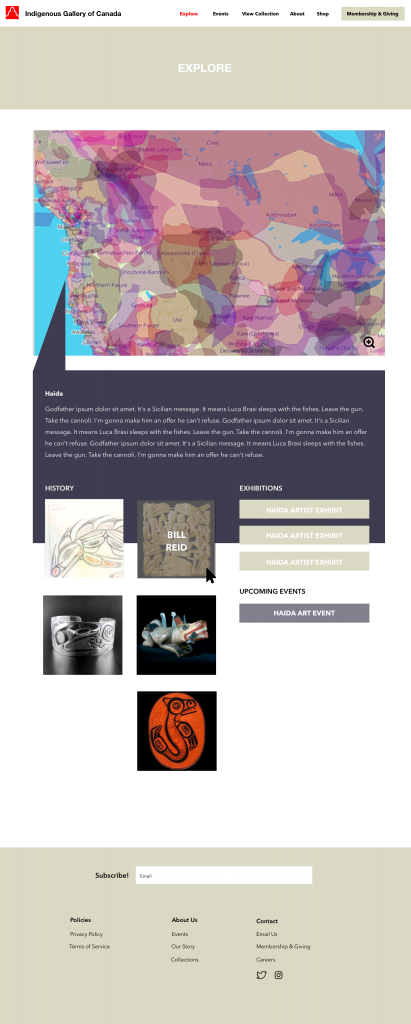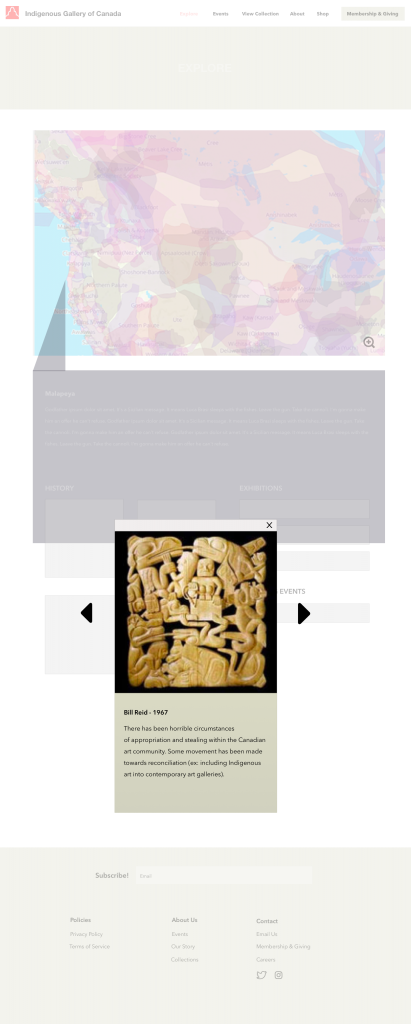The goal of this project was to address the issue of Indigenous art being treated as solely historical in Canada. I wanted the project to move towards reconciliation in the Canadian art community by creating awareness and sharing contemporary Indigenous art.
“Canadian art institutions need to do more
Ryan Rice
than just hire Indigenous people. They need
to have power and agency to carry out
the projects that they see as important
for Indigenous communities.”
What I found in my research for this project sparked empathy. I discovered that a lot of the issues were in the lack of representation amoungst Canadian art directors and curators. So I wanted to find a way for Indigenous people to have support and autonomy within the Canadian art community.

I decided the solution was to create a contemporary Indigenous art gallery that is run autonomously by Indigenous curators and funded by the National Gallery of Canada. The reason the NGC is a perfect contributor is because they have recently made efforts towards supporting Canadian Indigenous artists. However, they have come at it from a colonial perspective and this would be great opportunity for them to continue the relationship in a more positive way. They are also a recognized gallery within the art community so it would help the Indigenous gallery in terms of support and gaining a growing audience. I was suggested to make it Virtual Reality so it could be more accessible to the public as well.
After speaking with an Indigenous student in an interview, I discovered that most Indigenous people like the idea of having physical spaces and tangible events in the context of art. So it would be important to have the opportunity of pop-up events/exhibitions in galleries across Canada along with the microsite.
In creating the microsite, I made sure to include elements of geography, history, tribal information and information/links for featured artists. In terms of the geography, the Canadian map as it is today is not what it was before colonization. It was important to acknowledge that on this site and also act as an education tool. People can navigate to the “Explore” section, click on certain areas to learn about the tribe that inhabits there, along with historical artists, any upcoming events from that tribe, and any exhibits that feature artists from that tribe. The Virtual Reality portion acts similarily, showing information and links to the artists.
I think that though this microsite doesn’t solve the problem of reconciliation in the Canadian art community fully, it is definitely a step in the right direction. The design is clean and open, yet also more contemporary than your average art gallery website. It is easy to navigate through, making it accessible for most demographics within Canada. I feel that this is a well-thought out and well-researched project and I would give myself a 9/10.
I would also like to say that this project has opened my eyes up to some real issues happening currently in Canada. I have truly appreciated working on it and hope I get to work on projects that provoke positive change like this in the future.

